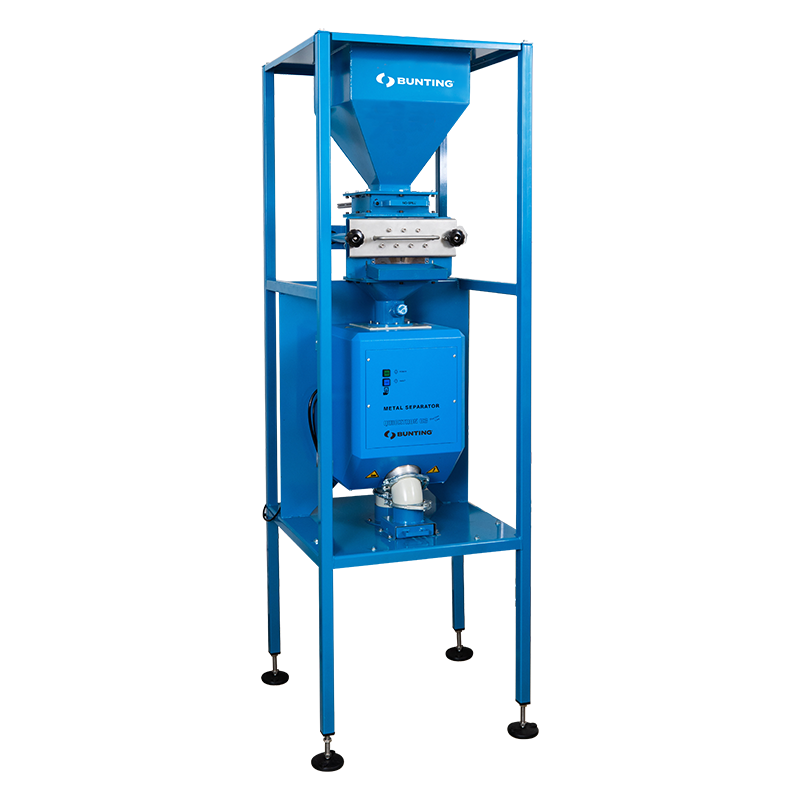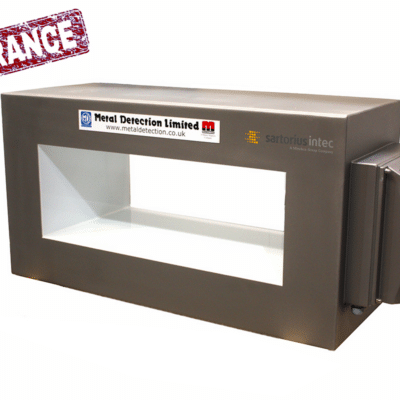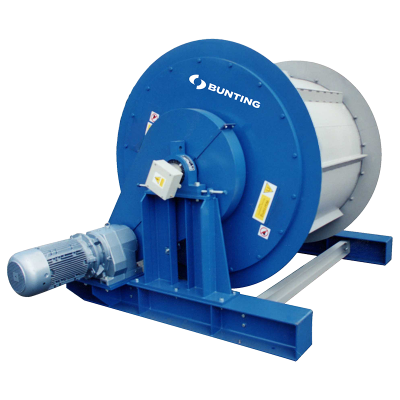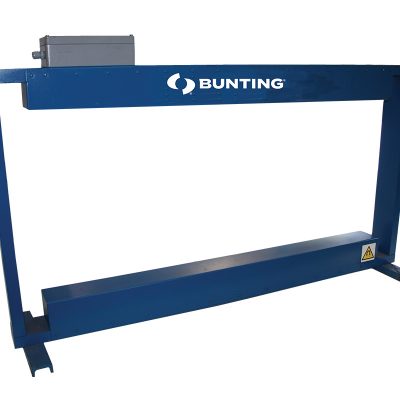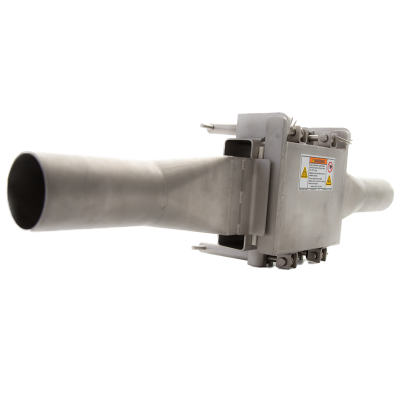Metal Cleaning Systems
Multiple combinations of magnetic and electronic separators can be used to meet your specific requirements. Cleaning Systems are designed for maximum protection against ferrous and nonferrous debris by combining magnetic and electronic separators. They are the perfect solution for purifying regrind and recycled goods in a plastics plant.
Description
Metal Cleaning Systems provide an all-metal removal solution utilising both magnetic separation and metal detection in one combined unit. The combination reduces product loss, especially when metal contamination levels are high. The primary stage magnetic separator (FF Drawer Filter Magnet) captures magnetic metals (commonly making up the largest proportion of metal contamination) leaving the quickTRON 03R or 05A metal detector to focus on identifying and removing non-ferrous metallics.
Key Features include:
- Adjustable sensitivity and rejection cycling on the metal detector reduces the loss of good material
- Automatic Product-Effect Compensation on the metal detector increases metal reject accuracy
- Open frame construction provides easy access to all components
- The metal detector electronics are sealed against dust
Related Blogs
Operation
In operation, the product (e.g. plastic beads, regrind, free-flowing resins, etc) flows under gravity into the feed hopper and through the high-strength neodymium tube magnets of the FF Drawer Filter Magnet. Ferrous metal contamination, as well as weakly magnetic abraded stainless steel, is attracted to and held on the surface of the tube magnets.
The remaining product falls down and into the infeed pipe of the quickTRON 03R or 05A metal detector housing the detection coil. When detecting a small and fine particle of either entrapped or free tramp metal, the control sends a signal to move the high-speed stainless-steel reject flap. The metal contamination, along with a small proportion of product, is rejected from the main product stream. The reject flap then returns to holding position to allow the flow of metal-free material. The reject time is adjusted to suit the installation.
The metal detector is supplied with an anti-static sensing tube. This prevents static build-up in and near the search coil avoiding false rejects due to static discharge.
The control allows product effect compensation to guarantee continuous detection sensitivity and trouble-free operation even with ‘difficult’ products.
Typical tramp metal captured by the magnetic separator and removed by the metal detector includes:
- Washers
- Nails
- Screws
- Nuts and bolts
- Wire
- Swarf
- Broken screens
- Foil
- Metal from shredder and granulator blades
- Abraded stainless-steel
Models
The Metal Cleaning System comprises of:
Applications
Metal Cleaning Systems are primarily designed for the plastics sector, but are also used in other applications where the product is dry and falling under gravity:
- Plastic manufacturing and recycling operations;
- Recycling;
- General powder and bulk handling;
- Dry food processing plants;
